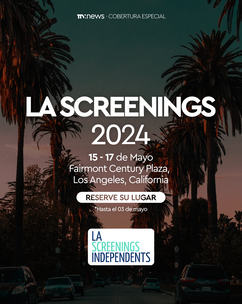Thought of as “the future of TV”, SVOD went from being the solution to becoming the problem, with an entire industry searching for a model that resembles the cable TV that they classified as obsolete. Will AVOD, PPV, FAST channels, the subscription model, or good old TV reign supreme?
It was the beginning of 2013, when Netflix decided to release its new original series, House of Cards, with all of its episodes available simultaneously, opening the door to a brand new viewing model and marking the beginning of a one-way path towards the streaming revolution.
At that time, viewers around the world were introduced to binge-watching, which, freeing them from the handcuffs of the linear TV premiere calendar, quickly went from being a novelty to being the bait that would attract thousands of users to subscribe to the platform.
And it was then that Netflix, in a way, solidified its promise to the public and shareholders that it would become the new television, completely replacing the linear TV model, with a subscription service where users could watch all the content they wanted for a monthly fee that was far from the inflated prices of cable TV.
Such was the success of the OTT platform that the following years saw what we now know as the streaming revolution, where it seemed that the future of entertainment was online, and all the media groups wanted their share. Add to that a two-year pandemic where millions of viewers globally demanded entertainment like never before, and the massive explosion of streaming platforms reached its peak.
Thus, to this day, there are few entertainment companies that have not launched their own streaming platform, with giants like Netflix, Prime Video, Disney+ in the lead, followed by Max and Discovery+, YouTube, Paramount+, Apple TV+ or Hulu, and dozens of other SVOD services vying for audiences globally.
THERE CAN ONLY BE ONE QUEEN BEE. And in this competition, it was never truer that “content is king,” as platforms embarked on a no-holds-barred battle to have the most coveted catalog in the industry. By 2021, the OTT investment in original content reached the titanic figure of 250,000 million dollars, in a fierce competition to see who signed the exclusivity agreement with the most in-demand showrunner, who acquired the most important IP or who carried out the more massive production.
But there is a reality that is inescapable: if everyone’s special, then nobody’s special. The fight for leadership in the world of SVOD generated a scenario where the subscription options far exceeded audiences’ financial possibilities, and that promise that Netflix made back then to offer “everything on TV, for less money” became unsustainable, in a reality where content was dispersed among multiple players and budgets became higher and higher.
The ability to attract new subscribers and retain existing ones has become a matter of life and death for the future of OTT platforms.
Thus, almost as quickly as it grew and exploded under the idea that it would become the future of entertainment, the SVOD business seems to have hit a wall, and both the platforms themselves and investors realized that it is not a sustainable business in the long term, or at least one that does not have the arm strength to hold up the increasing weight of investment in content and infrastructure.
REIGNING IT IN. So in the last year, the entertainment industry has gone through another major transformation: waves of cuts and massive layoffs that have spread throughout the industry, causing a veritable tsunami that reached all the big players and affected all levels of the organizational chart.
In an effort to control expenses and paint some red numbers green, not only groups such as WarnerBros, Paramount, Viacom, Lionsgate, NBCUniversal or CBS, to name a few, announced hundreds of layoffs, but even the great streaming leaders, Netflix, Amazon and Disney, had to succumb to the same fate, the latter being one of the most radical in its recovery strategy.
Dubbed “the streaming fix” by analysts, it appears the industry as a whole is once again looking for some solid ground to stand on after dismantling its TV businesses, migrating entire catalogs and workforces to its OTT platforms in this all or nothing bet on SVOD.
THEY KEEP PILING ON. That solid ground would seem to be exactly the one these companies wanted to escape when they declared that linear TV was a thing of the past. Because that business model based on advertising is now the workhorse for streaming giants, and just like a few years ago the “streaming revolution” took place, we are now witnessing the revolution of AVOD and FAST channels.
Left and right, almost all of the SVOD giants have launched ad-supported tier of their platforms in recent months, seeking to generate new avenues of revenue and growth to keep their businesses afloat.
Powered by platforms such as Hulu, Peacock and Paramount+ – the three platforms that account for the largest share of subscriptions in the industry, according to Ampere Analysis- AVOD users in the US continue to grow at a steady pace.
And the so-called kings of SVOD, Netflix and Disney+, have also released their own ad-supported levels in the last year, which are already paying off. Acceptance is growing for Netflix, fueled in large part by its crackdown on account sharing, and for Disney+, which increased its price alongside the launch of the AVOD tier.
Of course, this revolution is not limited to the US. According to a new study by NPAW, which surveyed 250 audiovisual business owners from North America, LATAM, Europe, ME and APAC, up to 76% of SVOD companies plan to introduce ads by 2025. In fact, implementing a hybrid model (an ad-supported tier plus a subscription-based premium tier) was the preferred path for 59% of them, a move that all respondents agree is aimed at lowering the price of subscriptions.
Against this backdrop, global AVoD revenue for TV series and movies will reach US$91 billion in 2028, up from US$41 billion in 2022, according to the Global AVOD Forecasts report from analyst firm Digital TV Research.
IF IT’S NOT BROKEN, DON’T FIX IT. If the SVOD model is not the profit-assured future that was once thought, and the bet is now on the good old model based on advertising and content sales, does that mean that we are going back to linear and cable TV as we knew it before the advent of OTT?
Seems unlikely.
That Netflix strategy of releasing the Kevin Spacey drama with all its episodes at once generated a shift in an audience who now demands to be able to watch content whenever and however they want to, making the OTT format essential when looking for entertainment.
However, with this demand there’s also room for advertisements in exchange for more affordable prices or free services. In addition, of course, to live events, be them music shows, news and, above all, sports, which continue to be the most effective content when it comes to attracting audiences worldwide.
Here lies the challenge. Finding the balance between investment and profit, where for many analysts, the answer lies in a hybrid model that combines the best of all worlds, SVOD, AVOD, FAST and even linear TV. It remains to be seen how companies regroup their offerings, channels, and platforms, adjust content spending to their post-pandemic budgets, and simply put, find ways to hit the brakes and the gas at the same time.












